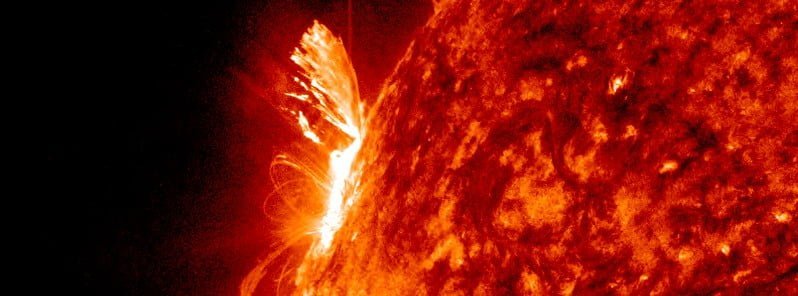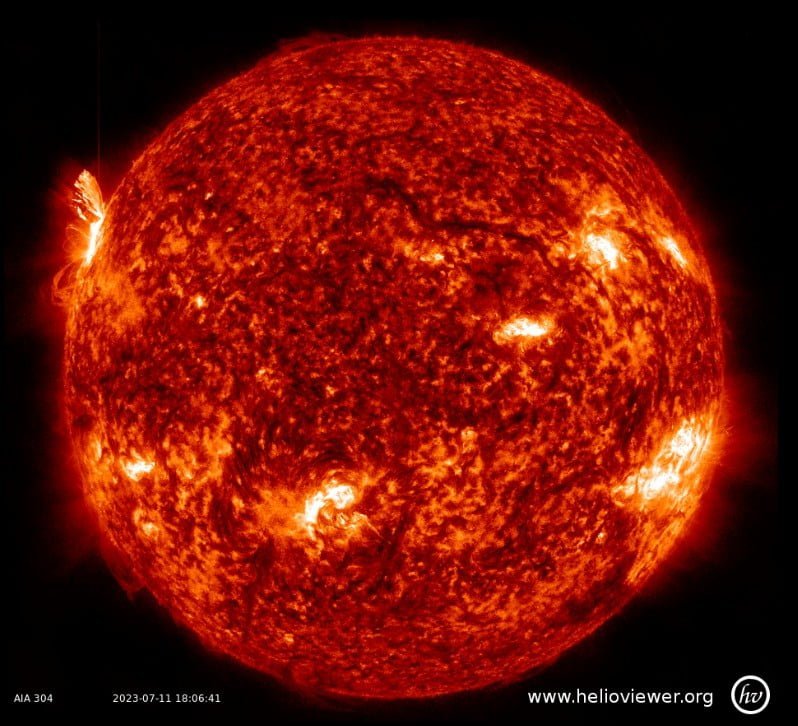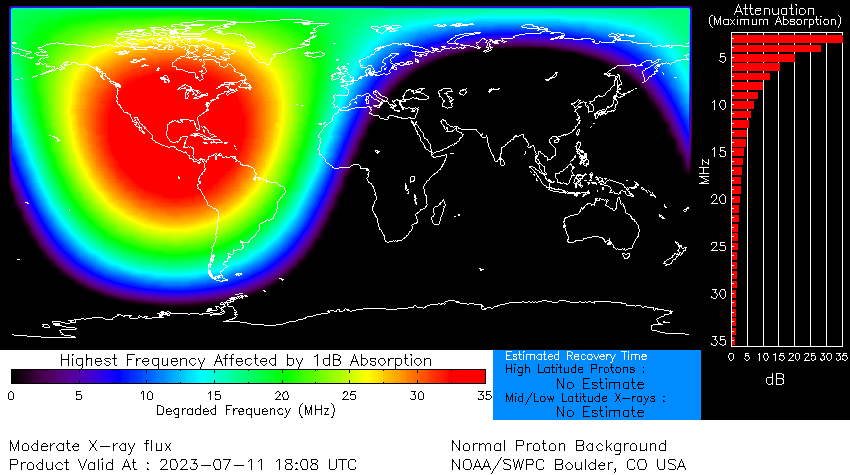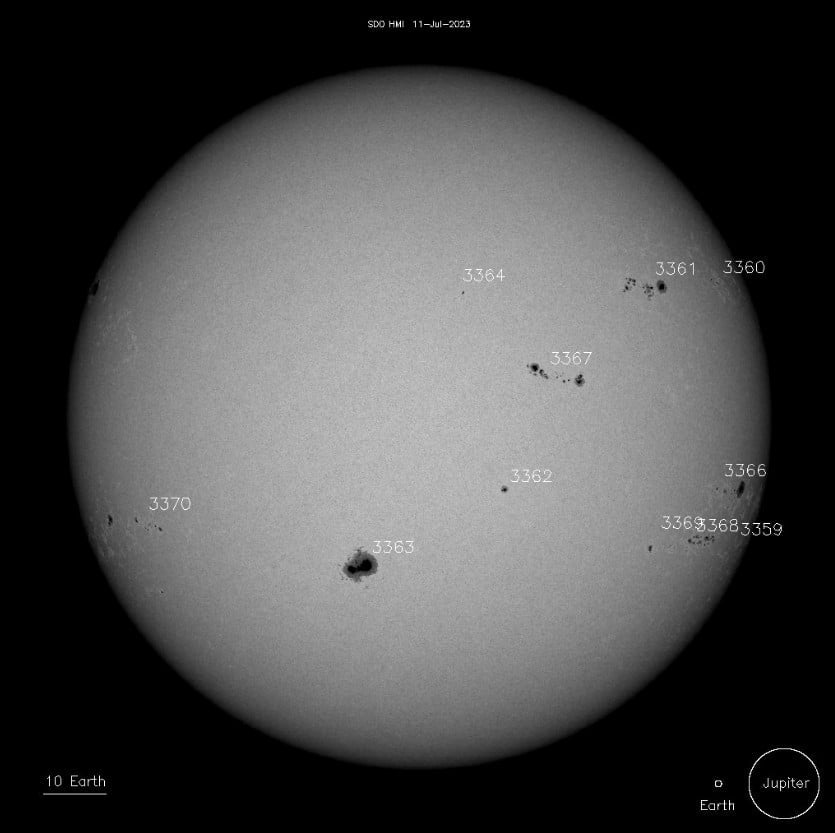Moderately strong M6.8 solar flare erupts from the NE limb of the Sun

A moderately strong solar flare measuring M6.8 erupted from a region located on the northeastern limb of the Sun at 18:08 UTC on July 11, 2023. The event started at 17:51 and ended at 18:16 UTC.
There were no radio signatures that would suggest a coronal mass ejection (CME) was produced. Even if it was, the location of the source region does not favor Earth-directed CMEs. This will change in the days ahead as the region rotates toward the center of the disk.
Radio frequencies were forecast to be most degraded over the United States, Canada, Central America, and parts of South America at the time of the flare.
Over the past 24 hours, this region produced several C-class flares, including a C8.0 at 02:14 UTC on July 11.


There are currently 11 numbered regions on the Earth’s side of the Sun.

3359 – Beta
3360 – Beta
3361 – Beta-Gamma-Delta
3362 – Alpha
3363 – Beta
3364 – Alpha
3366 – Beta
3367 – Beta-Gamma
3368 – Beta
3369 – Beta
3370 – Beta
Solar activity was at moderate levels over the past 24 hours, with several M-class flares, including M2.3 at 03:55 UTC and M1.4 at 22:18 UTC on July 10, followed by M2.0 at 14:35 UTC, M1.1 at 16:12 UTC, the aforementioned M6.8 at 18:08 and M1.0 at 19:29 UTC.
Solar activity is expected to be low, with a chance for M1 – M2 (R1-R2/Minor-Moderate) flares and a slight chance for an X1 (R3/Strong) flare through July 13, according to SWPC.
In 24 hours to 12:30 UTC today, the greater than 2 MeV electron flux flirted with high levels, but fell just short with a maximum of 933 pfu at 18:10 UTC yesterday. The greater than 10 MeV proton flux was at or near background levels. A slight enhancement was associated with the M2 flare early on July 10. A CME produced by this flare was extensively modeled and all SWPC results show the primary ejecta missing Earth ahead of its orbit. However, some possible shock arrival influences cannot be ruled out on July 12.
Solar wind parameters were at nominal levels. Solar wind speed ranged from 315 – 350 km/s, the total field ranged from 4 – 6 nT while the Bz component was between +/-5 nT. Phi angle was predominantly positive.
The geomagnetic field was quiet to unsettled levels and is expected to be mostly quiet through the rest of the UTC day.
Any CME shock influences that may materialize on July 12 will likely lead to unsettled to active levels of response, with a slight chance of G1 – Minor levels. July 13 is likely to experience unsettled to active levels, with a chance of G1 levels due to coronal hole high speed stream (CH HSS) effects and any lingering CME shock arrival influences.
Featured image credit: M6.8 solar flare on July 11, 2023. Credit: NASA SDO/AIA304, Helioviewer, The Watchers

Commenting rules and guidelines
We value the thoughts and opinions of our readers and welcome healthy discussions on our website. In order to maintain a respectful and positive community, we ask that all commenters follow these rules.